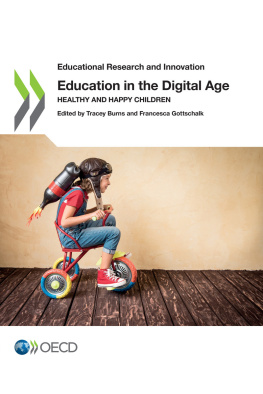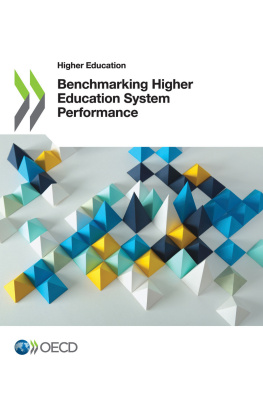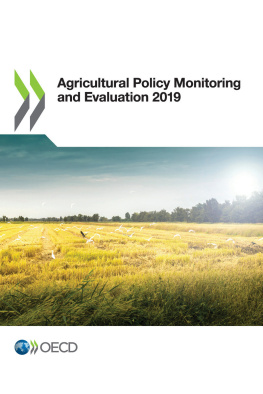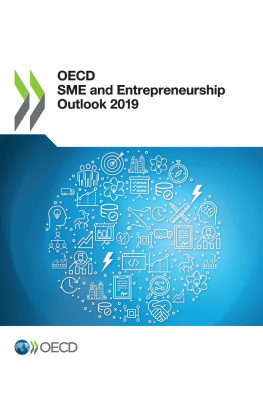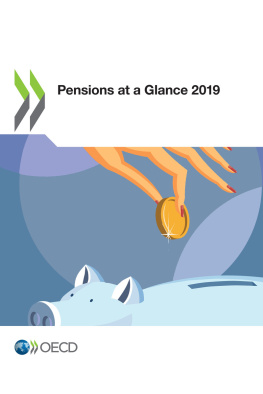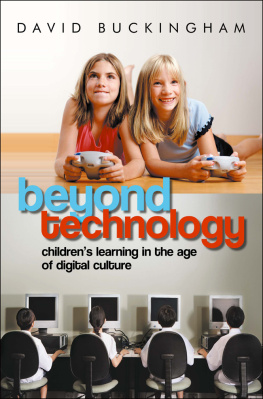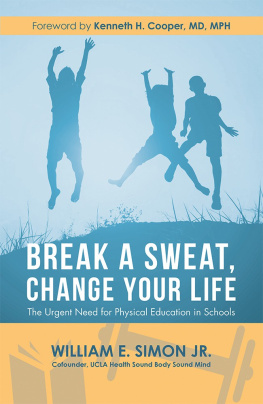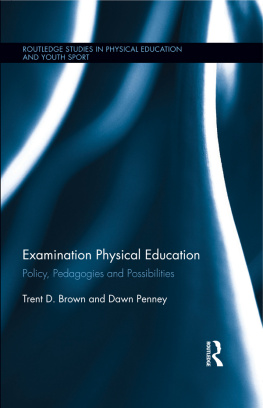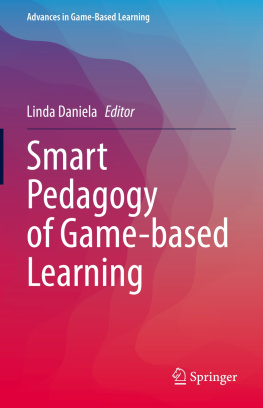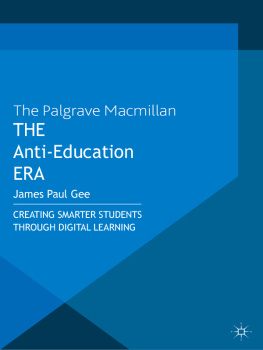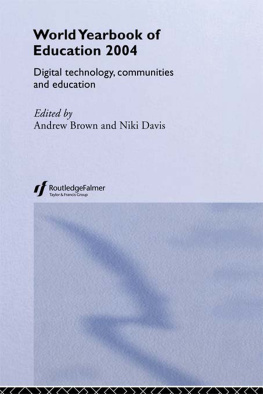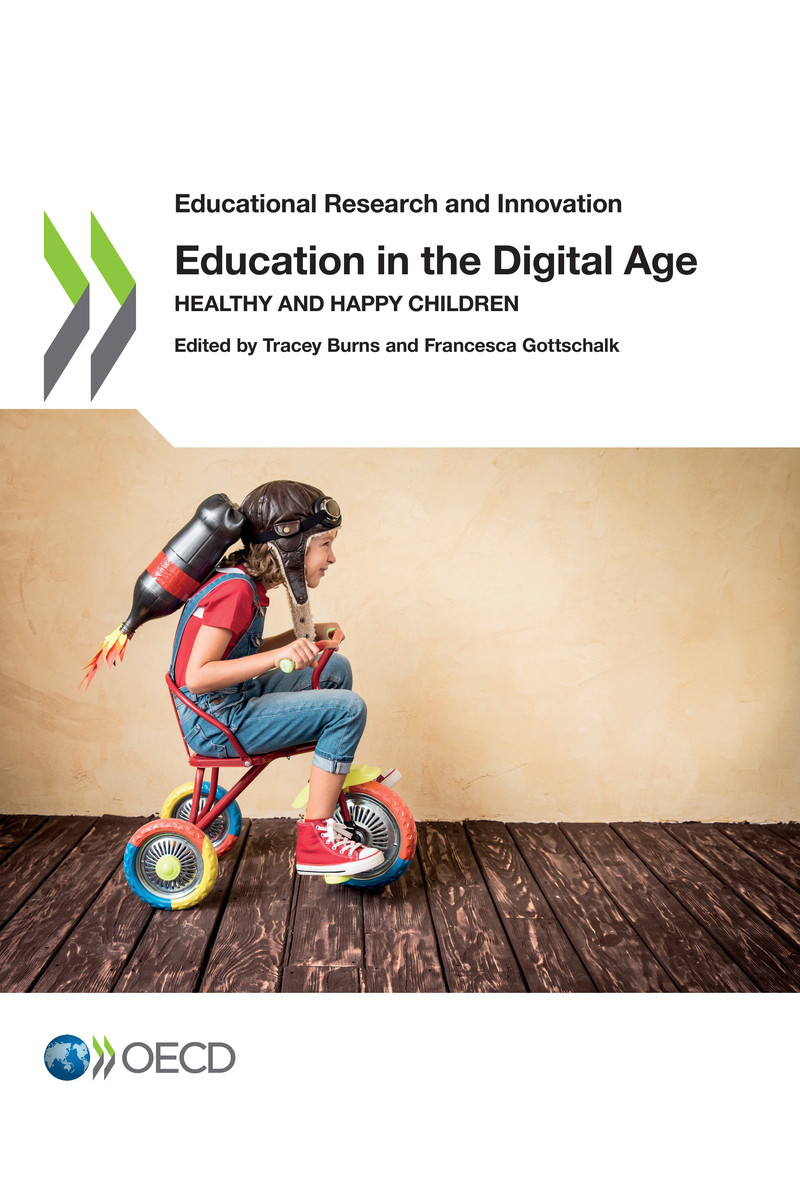Educational Research and Innovation
Education in the Digital Age Healthy and Happy Children
Edited by Tracey Burns and Francesca Gottschalk
Please cite this publication as:
Burns, T. and F. Gottschalk (eds.) (2020), Education in the Digital Age: Healthy and Happy Children , Educational Research and Innovation, OECD Publishing, Paris, https://doi.org/10.1787/1209166a-en .
Metadata, Legal and Rights
ISBN: 978-92-64-98886-6 (print) - 978-92-64-70649-1 (pdf) - 978-92-64-97544-6 (HTML) - 978-92-64-57257-7 (epub)
DOI: https://doi.org/10.1787/1209166a-en
Educational Research and Innovation
ISSN: 2076-9660 (print) - 2076-9679 (online)
This work is published under the responsibility of the Secretary-General of the OECD. The opinions expressed and arguments employed herein do not necessarily reflect the official views of OECD member countries.
This document, as well as any data and map included herein, are without prejudice to the status of or sovereignty over any territory, to the delimitation of international frontiers and boundaries and to the name of any territory, city or area.
The statistical data for Israel are supplied by and under the responsibility of the relevant Israeli authorities. The use of such data by the OECD is without prejudice to the status of the Golan Heights, East Jerusalem and Israeli settlements in the West Bank under the terms of international law.
Photo credits: Cover Sunny studio/Shutterstock.com.
Corrigenda to publications may be found on line at: www.oecd.org/about/publishing/corrigenda.htm .
OECD 2020
The use of this work, whether digital or print, is governed by the Terms and Conditions to be found at http://www.oecd.org/termsandconditions .
Foreword
The COVID-19 pandemic was a forceful reminder that schools are not just places of academic learning. They are part of the social fabric of our lives, and a large body of evidence sets out the important role they play in ensuring well-being and community. School closures also reminded us of the power of the physical world. The rush to remote learning highlighted not only the immense opportunities of the digital world, but also how essential our physicality is. Humans are social, and thrive on face-to-face connection. A hug emoji is not the same as a hug.
School closures also disrupted access to essential programmes such as free school meals, and governments had to move quickly to provide food or vouchers to families who relied on this to feed their children. As many social services were no longer available due to nationwide lockdowns, teachers and school personnel also had to step in, keeping regular contact with families, especially the most vulnerable.
While the situation experienced during school closures was extreme, it highlighted deficiencies in skills, capacity and resources in education that need to be addressed by policymakers around the world. It also emphasised the ongoing shift in the roles of teachers, from primarily academic provision to a more holistic role in supporting student well-being.
This volume emerges from the Centre for Educational Research and Innovation (CERI)s 21st Century Children project. This project looks at the nature of childhood in the digital age, and asks the question: How can teachers and schools work together with parents and communities to protect and guide children while still allowing them to be children, make mistakes and take risks?
This publication is a companion volume to Educating 21st Century Children: Emotional Well-Being in the Digital Age (2019). Focusing on the intersection between physical well-being and digital technologies, the report explores the important role of play and risk-taking in learning and child development. It looks at the pressures of modern life and a resulting pursuit of perfection in physical, cognitive and academic spheres. It examines how education systems empower children to be informed decision-makers when it comes to their own health and well-being, and how it protects them from harm. It ends with a look at the role of teachers and key partnerships in achieving these aims.
Many of these trends are a continuously moving target, and reports such as this can become quickly outdated. This volume provides an important snapshot at this point in time. The work of education systems around the world is to stay ahead of, or at least on top of, the curve. We owe it to children and youth to separate fact from fiction, and help support them to get the best start in life.
This publication was edited by Tracey Burns and Francesca Gottschalk from the OECD Centre for Educational Research and Innovation (CERI). Tracey Burns conceptualised this volume and leads the 21st Century Children project. Francesca Gottschalk was responsible for coordinating the contributions of the external experts. Simona Petruzzella contributed to the drafting of Chapter 3 and text boxes in other chapters. Sophie Limoges and Leonora Lynch-Stein contributed to the final stages of preparation for publication.
Acknowledgements
The process of putting together a publication with a variety of different contributors is necessarily a collaborative one, and this volume benefits enormously from the support of a number of individuals and institutions. The editors thank the CERI Governing Board for consistently supporting this work since its inception. Professor Catrin Finkenauer and her Dynamics of Youth team at Utrecht University, with support from the Dutch Ministry of Education, Culture and Science, made possible an expert workshop in 2020 that provided much of the backbone of the conceptual work and expert contributions in this volume.
The editors would also like to thank the external authors who contributed to this volume (in order of their chapters): Mariana Brussoni, Benoit Bediou, Michael Rich, Daphn Bavelier, Julian Sefton-Green, Rachel Rodgers, Sebastian Sattler, Rebecca Eynon and Kristen Weatherby.
In addition, special thanks to the following countries and systems who completed the 21st Century Children Policy Questionnaire: Australia, Belgium (Flemish Community), Belgium (French Community), Canada, Czech Republic, Denmark, Finland, France, Greece, Ireland, Japan, Korea, Latvia, Luxembourg, Mexico, Netherlands, New Zealand, Norway, Portugal, Russian Federation, Scotland (United Kingdom), Spain, Sweden, Switzerland, Turkey and United States. Your time, expertise, and co-ordination with colleagues from other ministries and departments are very appreciated.
Thank you to Simona Petruzzella for her drafting, ideas and inputs, and to Leonora Lynch-Stein for editorial support and careful review of each chapter. We would also like to thank past and present team members who contributed ideas, drafts and research papers from which this volume is drawn: Ruth Aston, Liam Bekirsky, Anna Choi, Marc Fuster, Julie Hooft Graafland and Alejandro Paniagua. Thanks also to Sophie Limoges for her editorial support.
Thank you also to our colleagues Andras Molnar and Elettra Ronchi from the Directorate for Science, Technology and Innovation, Grainne Dirwan from the Well-Being, Inclusion, Sustainability and Equal Opportunity Centre, and Lisa Robinson from the Universit de Cergy-Pontoise for their valuable feedback and comments on individual chapters. We very much appreciate your expertise and collaboration.

